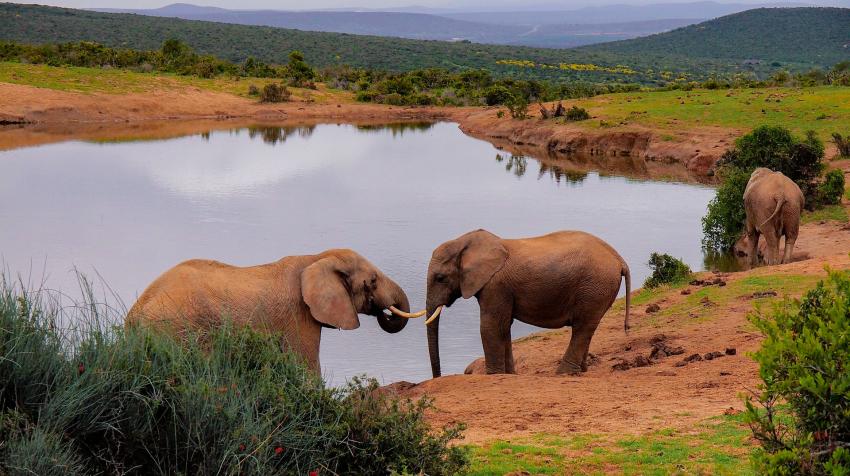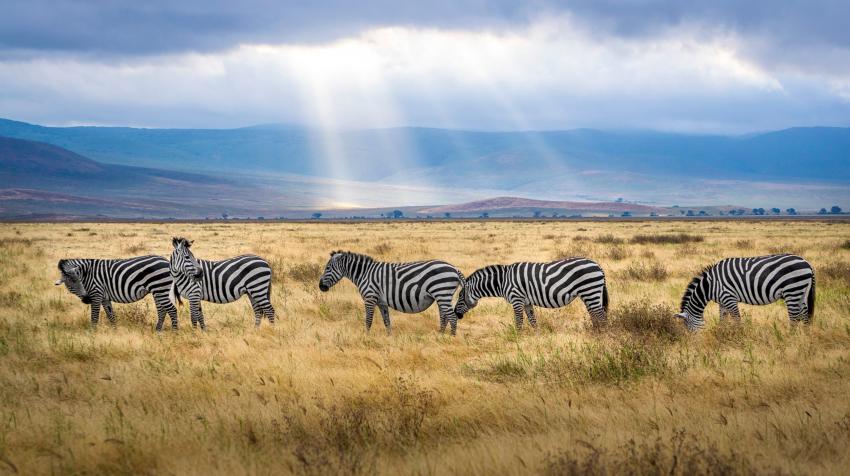The Sustainable Development Goals (SDGs) are a holistic set of objectives that recognize the interconnectedness of human beings and the planet on which they live, and the dependence of human well-being on a healthy environment. This recognition has been brought home starkly by the COVID-19 pandemic, with the SARS-CoV-2 virus widely thought to have originated in wild animals—though the science is still not definitive as to its precise origin and transmission route.
Our history has been one of increasing human dominance, transformation and manipulation of the natural world. Habitats for wild animals have inexorably shrunk as human populations and their settlements have expanded. Yet, with the new millennium and the emergent crises of climate change, biodiversity loss and now pandemic disease, human beings are re-examining and beginning to recalibrate their relationship with nature.
There have always been human populations living in harmony with nature more successfully than the dominant agro-industrial societies of the second half of the twentieth century. It is now incumbent on all societies to learn how to restore a healthy people-planet balance, drawing both on the latest science and on the traditional knowledge of indigenous peoples.
We have grown accustomed to the rising and in many cases high living standards afforded by the agro-industrial revolutions of the modern era. It is perfectly understandable to want to sustain and enhance these material gains, but we are now faced with the prospect that, unless we find new ways to organize our economies and societies, we risk undermining much of the progress of centuries. This is due not only to the threat of runaway climate change but also to a steep drop in the health and diversity of species, and of the ecosystems in which they survive and thrive.
Wildlife in the time of COVID-19
COVID-19 has ended any doubt about the huge potential impact that neglect of the health of wildlife and surrounding ecosystems can have on human well-being. Our encroachment into forested areas for agriculture and settlement, and the hunting and capture of, and illegal trade in, wildlife species and their parts, are under the microscope once more.
But the demographic and development pressures on wilderness areas remain intense in large parts of the world. Those pressures have been mitigated to a limited degree through the creation and management of protected areas. Wildlife tourism in parts of Africa and elsewhere has also created strong incentives to strengthen wildlife protection measures in the face of determined poachers and culturally ingrained demand in certain markets. Such efforts do not extend to all wildlife and habitats but are limited largely to iconic species. Thus, other means are needed for better managing human-wildlife interactions to mutual benefit elsewhere.

One proposal recently advanced by some members of the Wildlife Health Specialist Group of the International Union for Conservation of Nature (IUCN) Species Survival Commission is the creation of a Global Wildlife Health Authority. The role of the Authority would be to “foster development of countries’ capacities to manage disease threats to and from wild animals, including at the interface between human, domestic animal, and wild animal populations”.
Also, the international community—led by the World Health Organization, the Food and Agriculture Organization, the World Organisation for Animal Health, and the United Nations Environment Programme, and supported by a number of governments—is planning to establish a high-level expert council on One Health. The task of the expert council would be to improve the scientific basis for political decision-making to address global health challenges, starting from a recognition of the interdependencies among ecosystem health, wildlife and domestic animal health, and human health.
Nature and the SDGs
The 2030 Agenda for Sustainable Development is an integrated plan of action born of an understanding of human-nature interdependencies and the importance of a healthy planet to continued human progress, to lifting all people out of poverty, and to achieving shared prosperity by 2030. This includes stabilizing the Earth’s climate; slowing and reversing biodiversity loss; and conserving and sustainably utilizing renewable natural resources, including those of our vast oceans, for the well-being of present and future generations.
As governments and the international community work to end the pandemic and restart stalled economies, there is increasing understanding that nature needs to be integrated into the investment measures being undertaken as part of recovery packages. Building back better must bring nature, biodiversity and climate fully into the picture, and address the entrenched social inequalities laid bare by the pandemic.
World Wildlife Day reminds us of the urgent task at hand to recalibrate humanity’s relationship with nature towards a more harmonious one. Only then can we hope to achieve the ambitious goals of the 2030 Agenda.
The UN Chronicle is not an official record. It is privileged to host senior United Nations officials as well as distinguished contributors from outside the United Nations system whose views are not necessarily those of the United Nations. Similarly, the boundaries and names shown, and the designations used, in maps or articles do not necessarily imply endorsement or acceptance by the United Nations.




